Figure ground segregation and heuristics
1/13
There's no tags or description
Looks like no tags are added yet.
Name | Mastery | Learn | Test | Matching | Spaced |
|---|
No study sessions yet.
14 Terms
Figure-ground segregation principles
location in visual field
convexity
meaninfulness
depth
surroundedness
Border ownership
Grey bars share a common region with white bars and “dark grey” shares a common region with black bars.
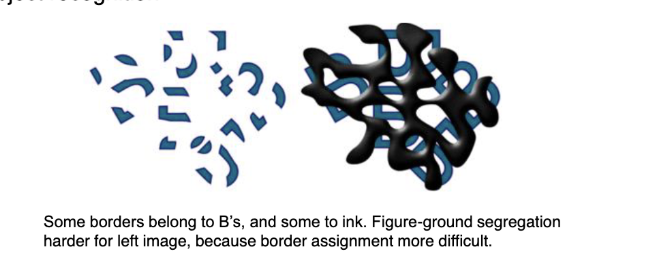
Location in visual field
lower areas in visual field are more likely to be perceived as figure
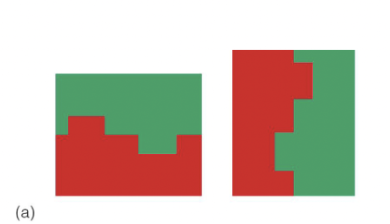
Convexity
regions with convex (outward bulging) border are more likely to be percieved as figure instead of backround
Meaningfulness
regions that are recognized as objects are more likely to be percieved as figure instead of backround
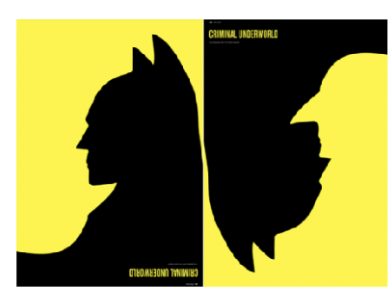
Because we know batman, we choose him as figure,
Once it's flipped, we might think that the yellow is a person.
We failed to see the yellow as a person because we were distracted by who we related to.
Depth
When the region is percieved to be in front of another its typically percieved as figure instead of backround

Surroundedness
if one region is compleletly surrounded by another, it is typically percieved as figure instead of backround
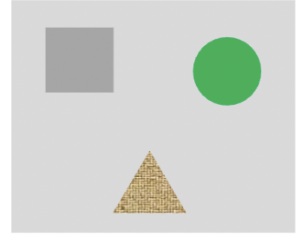
Heuristic
a process that solves a problem, but it not guarenteed to solve it optimally.
regularities in the enviornment
can be levered for more efficient cognition
Perception heuristics
Are mental shortcuts that help us quickly interpret sensory information, but they can lead to biases or errors in perception.
Our perceptual systems make use of heuristics for object detection (grouping and segregating)
Figural cues
visual signals that help us organize and interpret objects in our environment, such as depth, size, shape, and movement.
same thing as heuristics
How does our perceptual system function?
it assumes constancy from moment to moment
Heuristics in action
ask participants to make identification judgments back-to-back, their responses tend to blend together.
We can see how the responses build off the last one. We call this sequential dependencies.
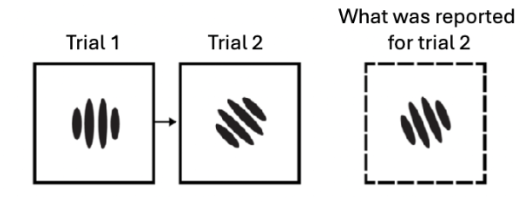
Importance of sequential dependcies
may help us identify something when scene changes
Blending of info from one moment to the next helps create a scene